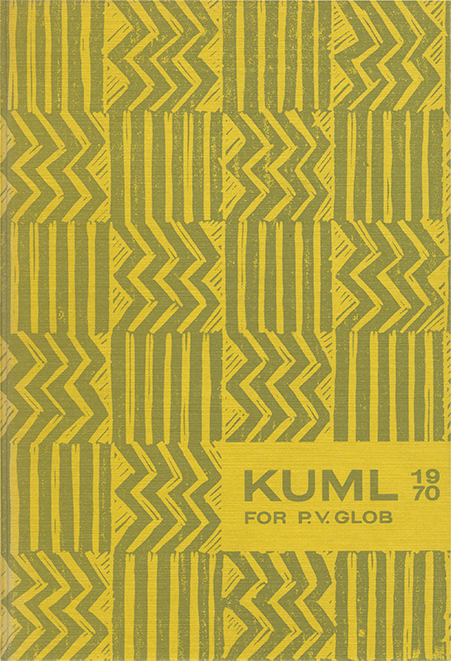Den ældre jernalders bebyggelse på Fyn
DOI:
https://doi.org/10.7146/kuml.v20i20.105421Nøgleord:
Early iron age, ældre jernalder, settlement, boplads, funen, fyn, førromersk, tidligromersk, sen romersk, pre-roman, early roman, late roman, place-names, stednavne, new finds, nye fundResumé
Early Iran Age settlement on Funen
During the last thirty years, our knowledge of Early Iron Age settlement on Funen has been enlarged by the discovery of many new settlements and graves, so that 504 localities are now known from the Pre-Roman, Early Roman and Late Roman periods. A list of finds according to period follows the text and these are also plotted on the maps figs. 1-4.
Figs. 1 and 2 show the extent of settlement in the Pre-Roman and Early Roman periods of the lron Age respectively. The similarity between the two maps is apparent. Settlement affects the same areas and is almost as dense in the former as in the latter period. The Pre-Roman settlement first gains momentum from Period II (the Ripdorf stage) however, only 4 finds being known on the island from Period I (see note 1). In general, there seems to be no connection between the areas cultivated in the Early Iron Age and those cultivated in the Late Bronze Age (note 2). The massive Iron Age settlement first commences c. 200 B.C. and continues till c. 400 A.D., when it ceases, to judge by the subsequent lack of finds at least. In the Late Roman Iron Age (200-400 A.D.) settlement becomes more sparse in the northwestern part of the island (Vends herred) and in the coastal strip to the east of this (see map 3); otherwise it follows that of the two earlier periods. The first three maps are combined in fig. 4.
In the three maps 1-3, the distribution of settlement and grave finds shows a tendency to concentrate in small local tracts. This division has been shown to have some correspondence with the later division into administrative districts or »herreder« (notes 4-5) and may be seen clearly in fig. 5, where the five ancient types of placenames are plotted, together with the administrative district boundaries. Between some of these local tracts, at least, there has been uncultivated and impassable border country.
The Early Iron Age settlement constitutes as far as archaeological finds are concerned a compact entity (map 4). This settlement occurs suddenly, since no continuity can be observed between the Late Bronze Age and the Early Iron Age. The reason for this is probably the transition from a transitory cut-and-burn cultivation in the Bronze Age to a more permanent agriculture in the Early Iron Age, which was perhaps made possible by the stalling of animals, whereby their manure became available for use on the fields. A corresponding problem concerns the cessation of Iron Age settlement around 400 A.D., at which time the archaeological finds cease. The reason for this may be, however, that the peasants decide about this time to give up the dispersed settlement which is indicated by the refuse pits of settlements and the graves, and instead live together in villages, as we know them from the Viking and Medieval periods.
Several ancient place-name forms can probably be linked to the 600 years of Early Iron Age settlement (figs. 1-3). Therkel Mathiassen and I have in previous works (notes 6, 8-14) tried to show that the ancient place-name endings, as recorded in fig. 5, are parts of names which the Iron Age peasants gave to the dispersed settlement areas but not to the villages. In the areas of northwest Jutland studied by Mathiassen villages were present in the Early Iron Age, whereas on Funen settlement was in general dispersed.
The over 200 new finds which have been made since I discussed the relationship between place-names and settlement in the Early Iron Age, in Fynske Aarbøger 1951, corroborate the conclusions I then reached. The local settlement tracts which have been described above cover, true enough, a large part of the area of the island group of Funen, but a comparison between the maps figs. 1-5 nevertheless shows an unambiguous correspondence between the settlements and the five ancient types of place-names. Prominent among these are the numerous names ending in -lev and -inge. Their link with the Iron Age settlements is shown in the scheme on p. 132. This employs hypothetical place-name settlements. The five types of place-names are all well represented within the settlement areas of the Early Iron Age, so that if each hypothetical place-name settlement is allowed to have a radius of 2 km there must be said to be complete coverage of place-names by Iron Age settlement. This is apparent from the percentages in the last column. It can also be shown that only a few finds fall outside the place-name circles. Some must necessarily do so, as the five types of names treated here are not the only ancient ones, and may no longer be extant.
Each place-name was tied to the local settlement tract with its individual farms. Later this name seems to have been transferred to the village which the local population for unknown reasons, be they economic, technical or defensive, decided to found, probably in the Late Iron Age. If this is correct, one should not generally expect to find antiquities of the Early Iron Age on the site of the present villages with ancient names. Prof. Aksel Christensen (note 26) has recently described this situation, "the regulated village with a certain commonalty probably existed as a type of settlement by King Gotfred's time ... many were previously founded by neighbours in a dispersed settlement after joint decision".
E. AlbrectsenDownloads
Publiceret
Citation/Eksport
Nummer
Sektion
Licens
Fra og med årgang 2022 er artikler udgivet i Kuml med en licens fra Creative Commons (CC BY-NC-SA 4.0).
Alle tidligere årgange af tidsskriftet er ikke udgivet med en licens fra Creative Commons.


